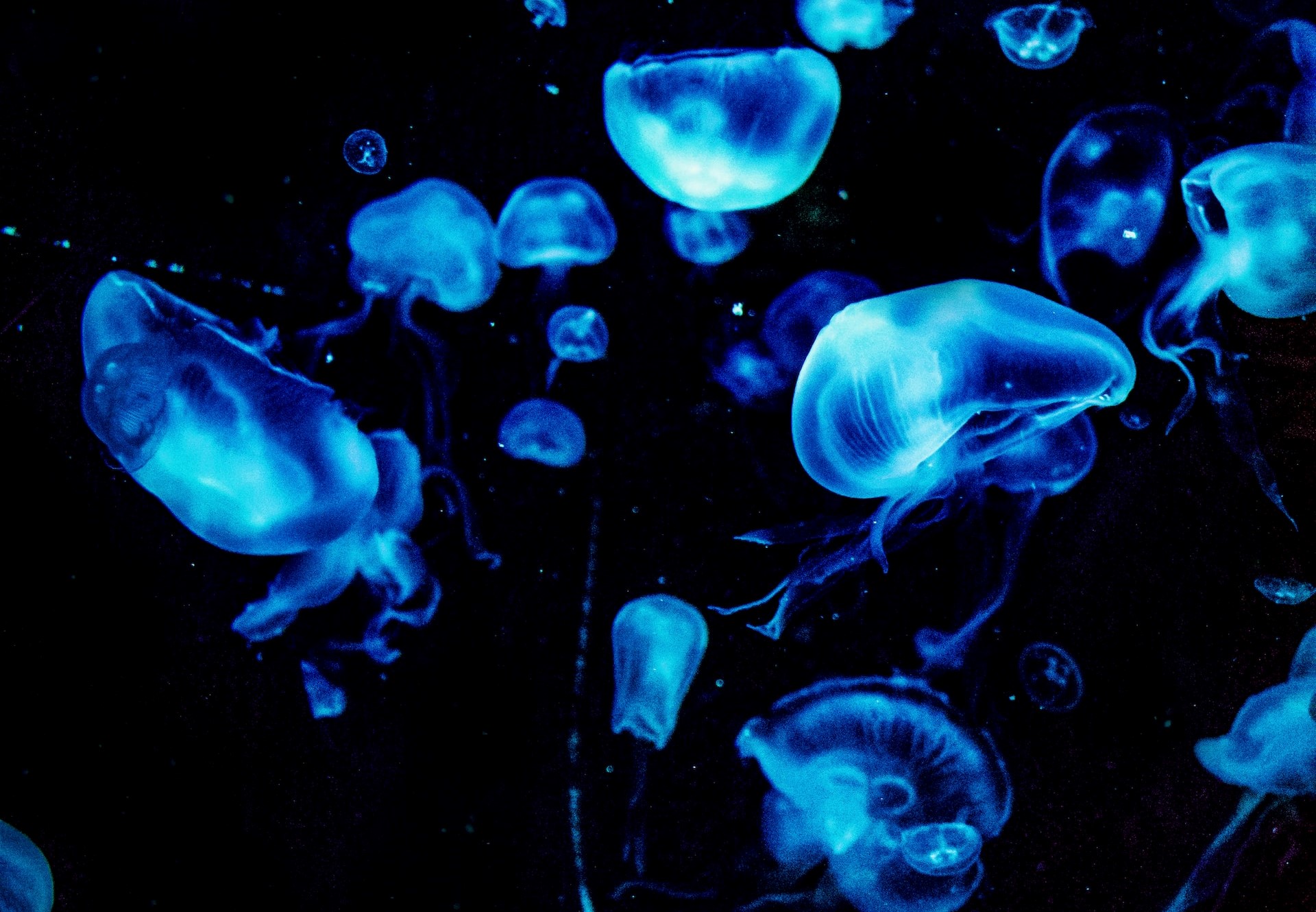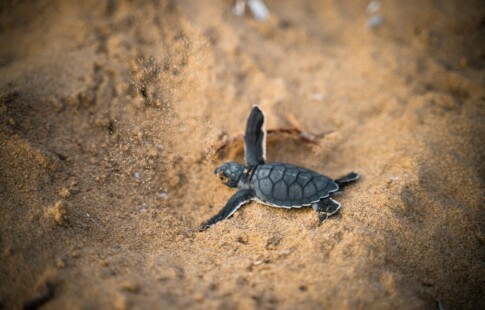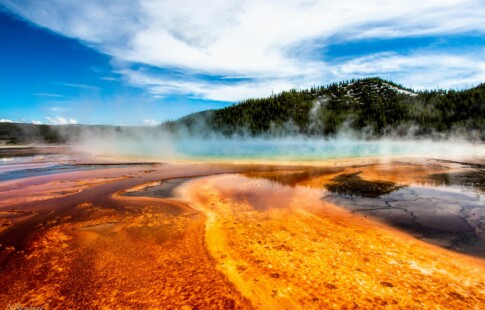
8 Creepy, Yet Cool, Deep Ocean Creatures
We are reader-supported. When you buy through links on our site, we may earn affiliate commission.
Deep below the sandy beaches of surf and sun lies an alien world of unrecognizable creatures. Less than 1,000 feet down and we literally enter the Twilight Zone, where fish have evolved to accommodate the low light and heavy pressure. The further down we travel, the more strange and otherworldly these deep ocean creatures become. About 3,000 – 13,100 ft. down in the Midnight Zone, sunlight is unavailable and animals scavenge and hunt in seemingly terrifying ways.
Though their adaptations appear creepy and odd in the light of day, their evolution is incredibly fascinating to study. How these creatures can survive seemingly uninhabitable conditions is a mystery biologists are still trying to decipher.
Let’s explore 8 of these magnificent animals and their unique additions to the ecosystem here on planet Earth.
1. Blobfish
These little guys caused quite a stir on social media lately as people laughed at their flabby, deflated faces. Strangely, blobfish aren’t all that blobby when in their natural habitat. Without bones or muscles, the pressure of deep ocean depths fills out their bodies so they can float above the ocean floor.
Unfortunately, the fame went all to their heads, as a blobfish’s head accounts for 40% of its body. Though often called the ugliest fish, blobfish represent the idea of strange, alien creatures lurking in the unknown depths. It is hard to imagine such a boneless creature on land, so these incredible creatures appear all the more fascinating.
2. Sea Angels
With a translucent wispy body and mesmerizing hues of orange and red, the sea angel is a puzzling deep ocean creature. Though its name conjures imagery of ethereal light, they are actually swimming, carnivorous snails.
The snail’s foot evolved into parapodia, or a feature that allows it to sail through deep ocean depths and ensnare prey. With its buccal cones, the sea angel can pry its meal straight from inside their protective shells.
Meanwhile, these creatures do not possess their own shell, freely gliding through the darkness.
3. Goblin Shark
Goblin sharks immediately strike fear into humanity’s hearts, but there is no danger to beachgoers as they tend to live in the Twilight Zone where shadows and misty filtered light darken the scene.
Sharks often have an unfair reputation in popular culture, but the goblin shark does seem to have a legitimate reason for its creepiness. Its protruding, pointed snout frames a mouth full of jagged teeth. This mouth is also protrusible, meaning it can retract or extend to aid in its hunting routines.
4. Sea Pig
The sea pig is perhaps more cute than creepy. In a transparent, gelatinous body with probing, spindly legs, the sea pig shuffles along the ocean floor. Like many deep ocean creatures, the sea pig is not what it seems. It is actually a breed of sea cucumber.
Unlike the carnivores above, the sea pig is a scavenger, scrounging for matter from deceased ocean animals that sink to the floor. Their oblong shape and array of tentacle legs make for an intriguing addition to an ecosystem.
5. Angler Fish
Anglers are also fairly well-known in today’s world. Their dorsal fin perches atop their cranium, hanging low with light to catch the eye of prey. In the deep ocean, light is so hard to come by that it dazzles small fish and invertebrates, right into the razor-sharp jaws of the angler.
Perhaps the most interesting, or disturbing, fact about the angler is its reproductive cycle wherein male anglers are parasites to their mates. With a simple bite, the male and female anglers fuse their bloodstreams, ensuring that the male is now dependent on the female to survive.
As parasitic fishermen far below the waves, angler fish continue to dazzle humanity with their unique anatomy.
6. Japanese Spider Crab
Japanese spider crabs are the largest crustaceans in the world with 10 legs spanning over 12 ft. As large scavengers, they feed off of matter that sinks to the ocean floor or is discarded by other scavengers. Crawling across the tan and reddish rock on the sea bed, their color allows a type of camouflage from 164 -1,640 ft below the surface.
Despite their size and worrisome likeness to spiders, the Japanese spider crab represents an intense beauty in our deep oceans built off of hardiness and a need to evolve.
7. Gulper Eel
The Gulper Eel is named after its most prominent feature: a big mouth. With a loose hinge, the eel can extend its reach to swallow prey in a truly terrifying feat. Its small eyes and pectoral fins also make for a strange match, contrasting from other deep sea additions that need help seeing in dark spaces.
While their habitat makes it difficult for scientists to explore just how gulper eels hunt, they speculate that the mouth is made to snap through schools of fish or shrimp and eat as many at once. Storing prey in a Pelican-like sac, the gulper eel is jaw-dropping in every sense of the word.
8. Bigfin Squid
Bigfin squids are also becoming notorious online for their creepy appearance. Living 1.5 to 3 miles underwater, the squid lets its tentacles float far below its main body. Tiny suckers catch creatures and allow the squid to bring them into its beak. These towering limbs can reach just about 20 ft long and can shuffle across the sea bed to catch prey.
Though its appearance is intriguing, scientists are on the prowl for more sightings to report. The more they find, the more we can know about their habits and strange new traits that allow them to survive in such a deep environment.
Even better, we can learn how to protect these creatures from the horrific effects of climate change that is destroying the home of marine life across the world. Studying deep ocean life is fascinating, but also life-saving.
Exploring the Depths
There is still so much to discover about Earth’s oceans. Beneath the shadows lie fascinating deep ocean creatures just waiting to be discovered by the planet’s team of biologists. Until then, they will continue to eat, reproduce and traverse the darkest parts of the ocean.
After all, it is only our perceptions and familiarity with creatures of land and light that make deep ocean animals so creepy. In the water, they are animals living freely, only horrifying to their prey.
Share on
Like what you read? Join other Environment.co readers!
Get the latest updates on our planet by subscribing to the Environment.co newsletter!
About the author
Maria Visser
Maria serves as the Assistant Editor of Environment.co. A true foodie and activist at heart, she loves covering topics ranging from veganism to off grid living.





